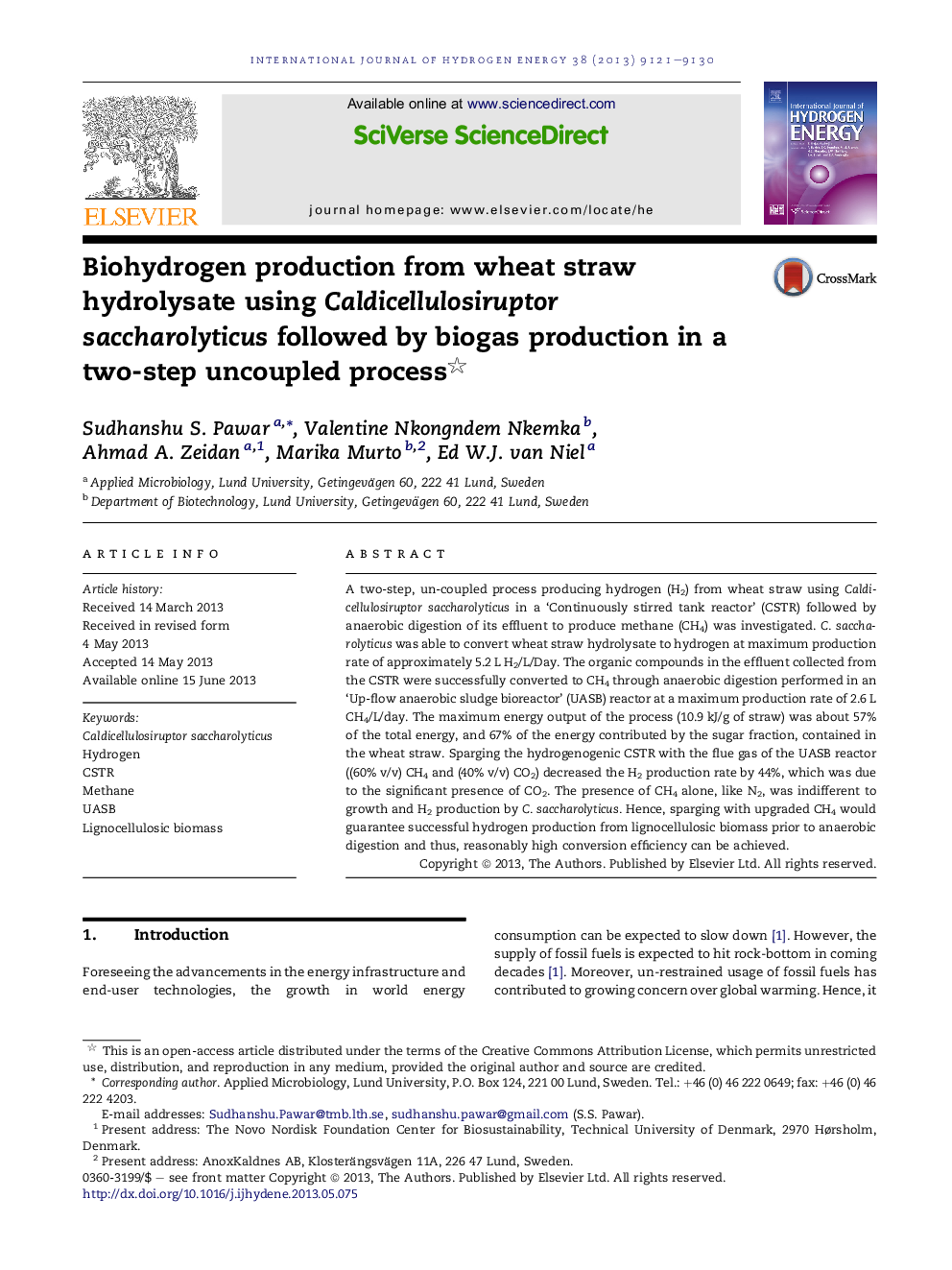| Article ID | Journal | Published Year | Pages | File Type |
|---|---|---|---|---|
| 7722341 | International Journal of Hydrogen Energy | 2013 | 10 Pages |
Abstract
A two-step, un-coupled process producing hydrogen (H2) from wheat straw using Caldicellulosiruptor saccharolyticus in a 'Continuously stirred tank reactor' (CSTR) followed by anaerobic digestion of its effluent to produce methane (CH4) was investigated. C. saccharolyticus was able to convert wheat straw hydrolysate to hydrogen at maximum production rate of approximately 5.2Â L H2/L/Day. The organic compounds in the effluent collected from the CSTR were successfully converted to CH4 through anaerobic digestion performed in an 'Up-flow anaerobic sludge bioreactor' (UASB) reactor at a maximum production rate of 2.6Â L CH4/L/day. The maximum energy output of the process (10.9Â kJ/g of straw) was about 57% of the total energy, and 67% of the energy contributed by the sugar fraction, contained in the wheat straw. Sparging the hydrogenogenic CSTR with the flue gas of the UASB reactor ((60%Â v/v) CH4 and (40%Â v/v) CO2) decreased the H2 production rate by 44%, which was due to the significant presence of CO2. The presence of CH4 alone, like N2, was indifferent to growth and H2 production by C. saccharolyticus. Hence, sparging with upgraded CH4 would guarantee successful hydrogen production from lignocellulosic biomass prior to anaerobic digestion and thus, reasonably high conversion efficiency can be achieved.
Related Topics
Physical Sciences and Engineering
Chemistry
Electrochemistry
Authors
Sudhanshu S. Pawar, Valentine Nkongndem Nkemka, Ahmad A. Zeidan, Marika Murto, Ed W.J. van Niel,
